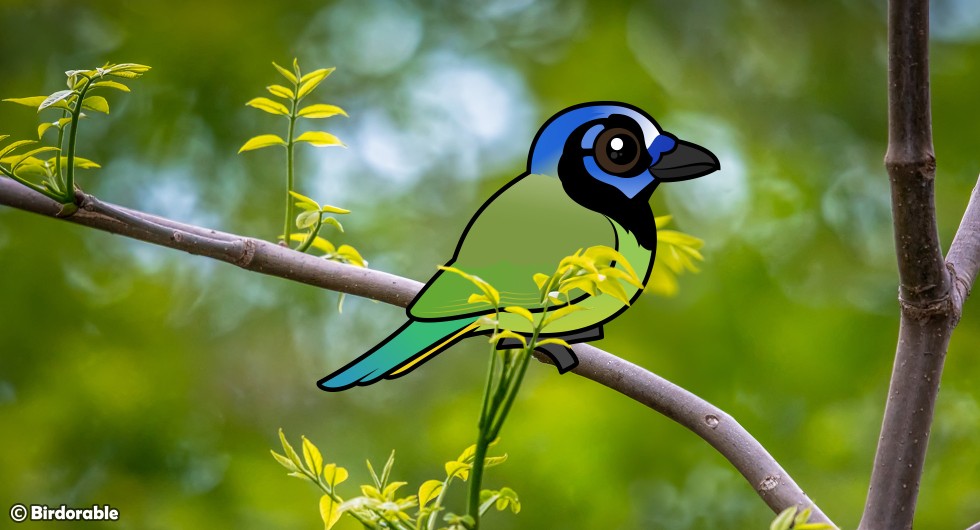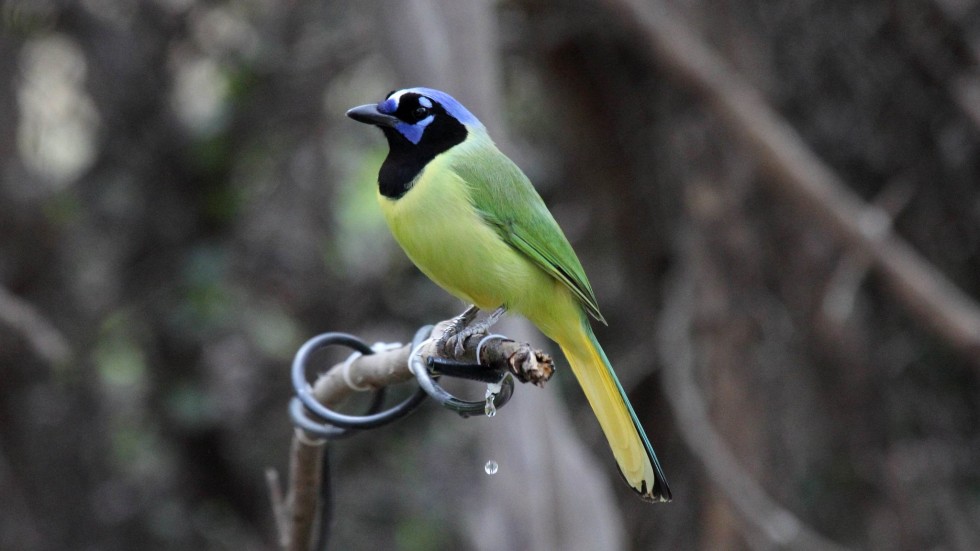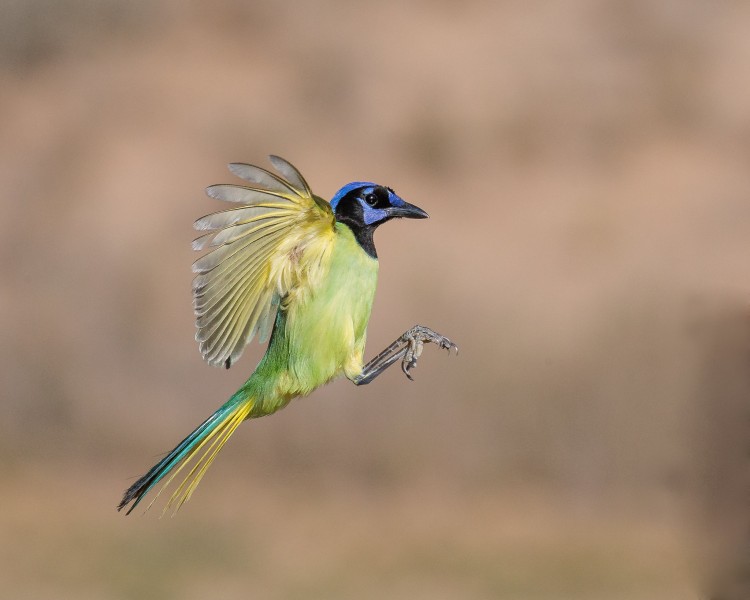Species Profile
Feathers of Green: Learn About the Green Jay

The Green Jay (Cyanocorax yncas) is a vibrant jewel among birds, with its dazzling array of green, blue, black, and yellow feathers. Native to the tropical regions of Central and South America, and spotted as far north as the southern tips of Texas, the Green Jay is an avian example of nature's colorful palette. These birds are not only a feast for the eyes but also play a vital role in their ecosystems, embodying the interconnectedness of life within their habitats.
One of the most striking features of the Green Jay is its colorful plumage, which blends seamlessly with the lush tropical environments it inhabits. This brilliant coloration serves as camouflage, hiding them from predators as they move through the foliage. The blend of greens and blues mirrors the dappled sunlight filtering through the trees, while their brighter colors dazzle and distract. Their appearance is not just for show; it's a survival strategy honed by evolution.
In addition to their beauty, Green Jays are known for their intelligence and complex social behavior. They are corvids, after all, part of a family of birds that includes crows and ravens, all known for their social interactions and intelligence.
Green Jays live in family groups and exhibit cooperative breeding behaviors, where not only the parents but also older siblings participate in raising each batch of young. This communal lifestyle strengthens social bonds and increases the survival rate of their offspring.
The Green Jay's diet is omnivorous, including insects, seeds, and fruits, which makes them important seed dispersers and pest controllers in their ecosystems. Their foraging behavior contributes to the health and regeneration of their forest homes, showcasing their role as ecological engineers.

Green Jay by Dominic Sherony (CC BY-SA 2.0 DEED)
Green Jays are also notable for their vocalizations, which include a variety of calls and mimicked sounds. Their ability to mimic the calls of other birds and potentially even human-made noises demonstrates their adaptability and intelligence. These vocal skills are not merely for communication within the flock; they can also be used to deceive other species or deter predators, adding another layer to their complex behaviors. Another remarkable part of their vocal behavior occurs during breeding season, when the birds become quiet, with all individuals remaining silent when caring for vulnerable babies in the nest.
Despite their adaptability, Green Jays, like many species, face threats from habitat loss and fragmentation due to deforestation and agricultural expansion. Protecting their natural habitats is crucial for their survival, highlighting the importance of conservation efforts in tropical and subtropical regions. Initiatives to preserve large tracts of forest and establish wildlife corridors are vital to maintaining the biodiversity and ecological integrity of these areas.
The Green Jay's presence enriches the tapestry of biodiversity in the Americas, reminding us of the beauty and complexity of the natural world. Their behavior and ecology offer fascinating insights into the workings of tropical ecosystems, emphasizing the need for conservation and the importance of each species in the web of life. As we strive to protect these vibrant birds and their habitats, we also safeguard the health and diversity of our planet for future generations.

Green Jay in Texas by Andy Morffew (CC BY 2.0 DEED)













Comments
Leave a comment
Thank you!